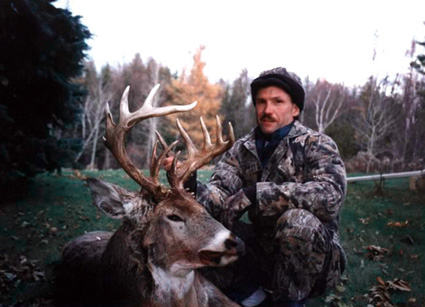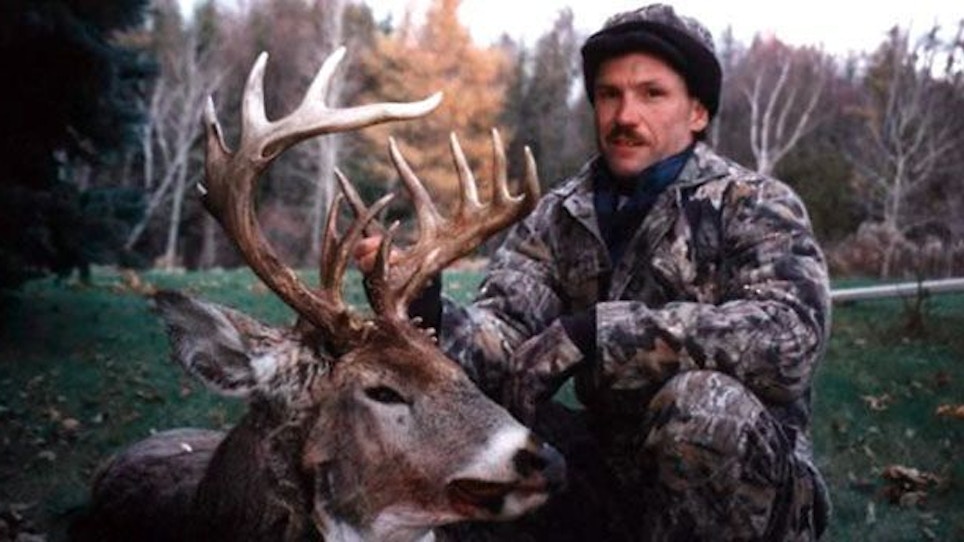Use A Wall
 John Eberhart with a buck he killed near a highway fence. He did not have a good photo of the 8-point buck mentioned in the story. |
A savvy buck often circles when it responds to rattling and deer vocalizations. If the cover and terrain allow the buck to sneak around you without being seen, it will smell you and vanish without being detected.
You can avoid this dilemma by calling with your back against a "wall" that prevents the buck from getting downwind of you. Potential walls include sheer hillsides, sharp dropoffs, rivers, ponds, and roads.
Major highways often serve as walls for Michigan’s John Eberhart, who has tagged 36 Pope & Young-class bucks in Michigan, Iowa, Illinois, Kansas, and Missouri. Most of these whitetails were taken on heavily hunted public land in Michigan.
A buffer zone of grass typically grows adjacent to Michigan’s highways. The grass ends at a fence 20 yards or more away that runs parallel to the highway. Wherever the fence borders brushy cover, woods, and other whitetail habitat, it forms a wall that Eberhart can use to his advantage.
"Nobody hunts there because they don’t think a good buck will tolerate being near heavy traffic," Eberhart says. "That's why those fence lines attract big bucks.”
Bucks that live near highway fences learn to stay just out of sight of motorists. However, sometimes they make a mistake and show themselves, such as the buck Eberhart glimpsed while driving a highway in mid October.
Eberhart took the next exit and drove secondary roads to the area where he had seen the buck. Luckily, the property was public hunting land. After donning the scent-free scouting clothing he always carries in his vehicle during bow season, Eberhart started snooping around. He jumped a nice 8-point whitetail from a tall patch of weeds near the highway fence.
Eberhart walked along the fence to the nearest timber and found 17 rubs and nine active scrapes. That prompted him to immediately pick a tree for a stand and clear some shooting lanes.
Four days later, Eberhart waited in that tree through a windy, rainy afternoon. With an hour of hunting light left, he did an aggressive rattling sequence. A small 8-point came in timidly. Eberhart figured it was worried about running into a bigger buck. A sudden burst of wind spooked the young buck and it ran off.
Soon after that, seven does and fawns appeared and started feeding on white oak acorns. It was nearly dark when Eberhart heard a grunt. Seconds later, the 8-point buck he had seen from the highway stepped into view and presented a 25-yard shot. Hunting against the wall had produced another good buck for Eberhart’s trophy wall.
Quick Tip
When Eberhart hunts Michigan’s pressured whitetails, he normally doesn't rattle until he sees a buck passing out of bow range. Then he softly tickles the tines to sound like two young bucks sparing. The exception is when windy conditions generate so much noise that it takes loud, aggressive rattles to be heard over the clattering leaves. One reason Eberhart rattled blind when hunting the 8-point buck that lived near the highway fence is that he had found no sign of hunters in that immediate area.
"Other bowhunters were hunting that property, but they all headed into the woods away from the highway," Eberhart says. "I think that made the buck more vulnerable to rattling."






